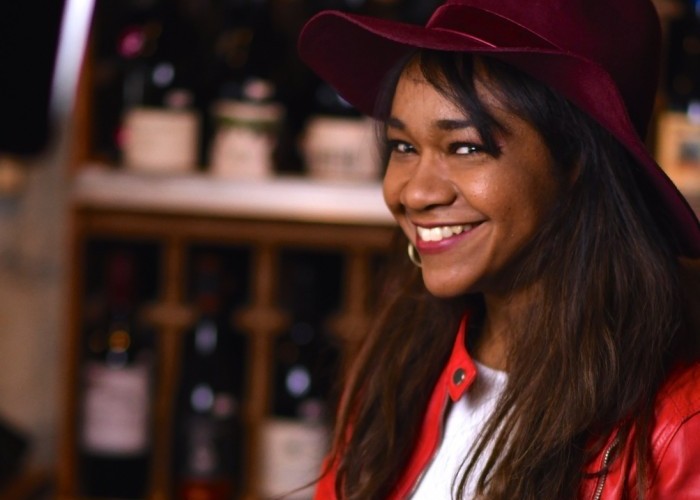Jun 3, 2025 11:25 AM
In Memoriam: Al Foster, 1943–2025
Al Foster, a drummer regarded for his fluency across the bebop, post-bop and funk/fusion lineages of jazz, died May 28…

Magela Herrera perceives her work to be the result of a musical and cultural collision.
(Photo: Jose M. Alconchel)It’s surprising to hear Havana-born flutist, composer and vocalist Magela Herrera talk about inspiration drawn from Norway’s white landscapes, forests and fog. But she explains that living in the Nordic country amid six years of studies afforded her a different way of seeing music. And it allowed her to bring the best of all worlds together—classical, European, Afro-Cuban—on Explicaciones (Brontosaurus), her debut album.
Moving to Miami from Oslo two years ago, Herrera continued navigating a journey that began with a music-loving father and a highly musical extended family, including her uncle “El Guayabero,” a well-known traditional Cuban singer. Her childhood eventually led Herrera to dreams of joining an orchestra and a bachelor’s in classical music from the Instituto Superior de Arte in Havana in 2006. After completing her studies, though, Herrera left the classical world behind to join Mezcla, a renowned Havana fusion band.
Her tastes again shifted. After performing in 2009 at Norway’s Oslo Jazz Festival, and completing an additional bachelor’s, as well a master’s in jazz/improvised music performance from the Norwegian Academy of Music, Herrera found herself moving away from “traditional and conventional” jazz.
Her background, she said, made her an artist centered on melody and rhythm with a tendency toward complex chord changes, and as she puts it, “a lot of information.” Norway, Herrera said, taught her “a new way of seeing music.” She was enchanted by the idea of moving away from more traditional jazz and notation: “I was not used to that style of music—free improvisation is so different. I didn’t have to follow a strict pattern as to how music should sound or what music should be.”
As a result, Herrera left behind her charts, and went “deeper into style,” focusing her musical expression on other details: dynamics, texture, mood and, most of all, the idea of creating landscapes—describing images with sound.
As an example, she mentioned a cut from the new album, “Ahora,” for which she took inspiration from Norway’s natural landscape and beauty: the mountains, the smell of the air, the vibe of the city and people, and even Norwegian folk music. Her musical worlds, though, frequently are in collision mode. Other tracks on Explicaciones directly counter the Nordic vibe, including one composed for her father, “Danzón Para Papá,” a tune highlighting the centuries-old Cuban dance genre.
Now, Miami’s tropical grooves, steeped in funk, hip-hop, r&b, as well as jazz, are allowing Herrera to explore a new set of colliding worlds, and she describes “Two Sidewalks,” a vibrant track from the new album, as a juxtaposition of Norwegian jazz and Miami’s brightly hued rhythms.
“I don’t just want to be considered just a jazz flutist,” she said. DB

Foster was truly a drummer to the stars, including Miles Davis, Sonny Rollins and Joe Henderson.
Jun 3, 2025 11:25 AM
Al Foster, a drummer regarded for his fluency across the bebop, post-bop and funk/fusion lineages of jazz, died May 28…

“Branford’s playing has steadily improved,” says younger brother Wynton Marsalis. “He’s just gotten more and more serious.”
May 20, 2025 11:58 AM
Branford Marsalis was on the road again. Coffee cup in hand, the saxophonist — sporting a gray hoodie and a look of…

“What did I want more of when I was this age?” Sasha Berliner asks when she’s in her teaching mode.
May 13, 2025 12:39 PM
Part of the jazz vibraphone conversation since her late teens, Sasha Berliner has long come across as a fully formed…

Roscoe Mitchell will receive a Lifetime Achievement award at this year’s Vision Festival.
May 27, 2025 6:21 PM
Arts for Art has announced the full lineup for the 2025 Vision Festival, which will run June 2–7 at Roulette…

Benny Benack III and his quartet took the Midwest Jazz Collective’s route for a test run this spring.
Jun 3, 2025 10:31 AM
The time and labor required to tour is, for many musicians, daunting at best and prohibitive at worst. It’s hardly…